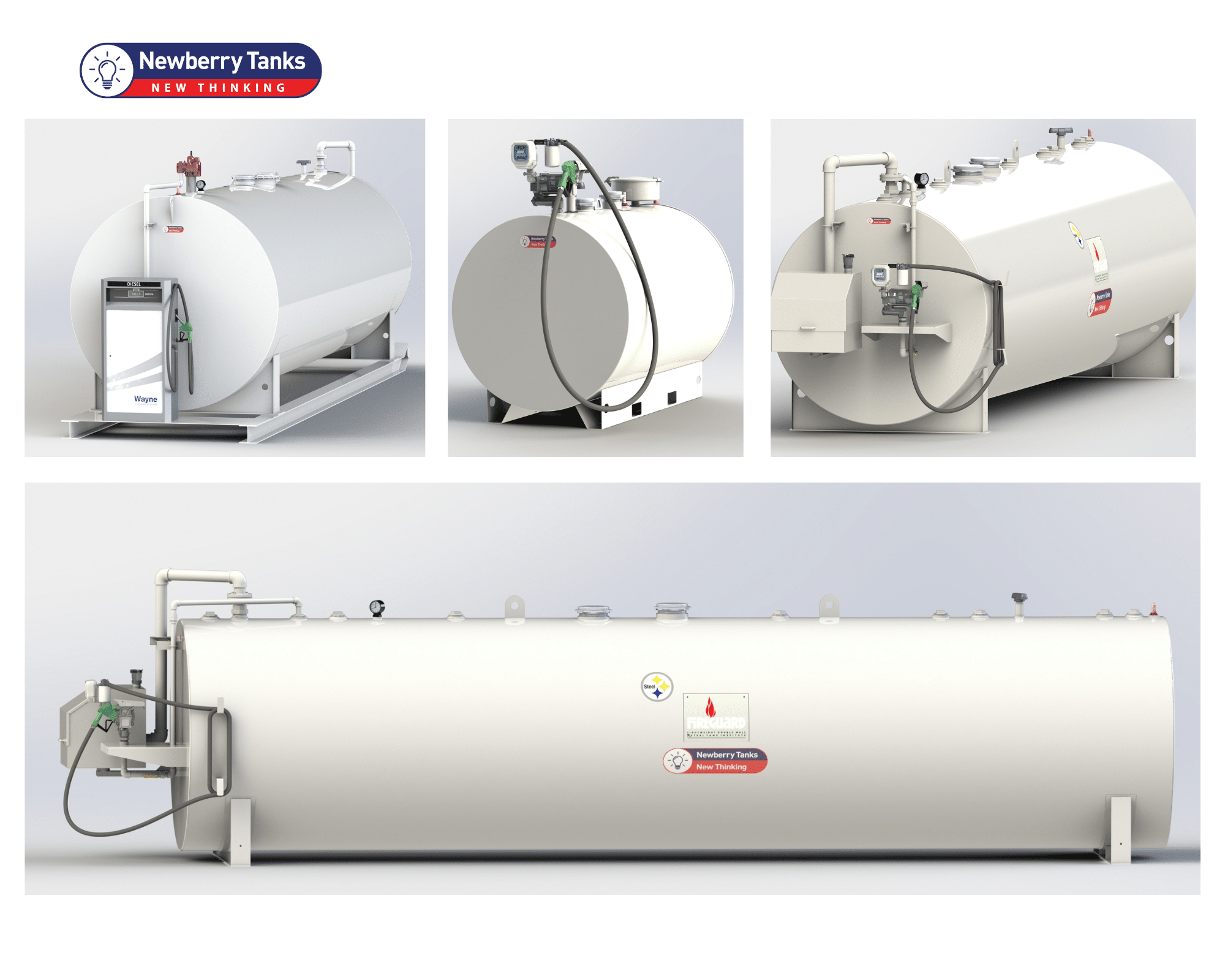
When it comes to fuel storage, selecting the right Aboveground Storage tank (AST) is crucial for ensuring safety, efficiency, and compliance. Whether you’re in construction, agriculture, fuel distribution, or industrial operations, choosing the best tank can save your business time, money, and prevent potential environmental liabilities.
This guide will walk you through:
- How to choose the right AST based on capacity, usage, and industry needs
- The differences between double-wall and single-wall tanks (pros & cons)
- Common installation mistakes to avoid
Step 1: How to Choose the Right Aboveground Fuel Storage Tank
Before investing in an AST, consider these key factors:
- Determine Your Fuel Storage Needs
- Capacity: How much fuel do you need to store? We offer ASTs that store up to 30,000 gallons.
- Fuel Type: Our tanks are compatible with most fuels including diesel, gasoline and biodiesel. Some specialized fuels, such as aviation fuels, may require a liner. Newberry also offers tanks for other purposes, such as non-potable water, chemicals and lubricants.
- Usage: Will the tank be used for on-site fuel storage, fleet fueling, or backup power?
- Consider Industry Requirements.
- Construction & Industrial: Tanks must be rugged, mobile, and compliant with industry standards including OSHA, EPA, fire codes and others.
- Agriculture: Farmers need long-term, durable storage solutions that withstand outdoor conditions.
- Fuel Distributors: Companies may require high-volume storage and additional safety features.
- Flammable & Combustible Fuels: Along with UL 142 Double-Wall tanks, Newberry offers STI-Flameshield® and Fireguard® tanks for aboveground storage of flammable and combustible liquids, certified to STI/SPFA standards when additional fire protection is required.
- Factor in Compliance & Safety Regulations
- EPA SPCC (Spill Prevention, Control, and Countermeasure) regulations
- Fire Codes (NFPA 30, UL 142, STI/SPFA
- State & local permitting requirements
Step 2: Single-Wall vs. Double-Wall Tanks – Which One Is Right for You?
One of the biggest decisions when selecting a fuel storage tank is choosing between single-wall and double-wall designs. Here’s how they compare:
| Feature | Single-Wall Tanks | Double-Wall Tanks |
| Cost | Lower initial cost | Higher upfront investment |
| Environmental Protection | Requires additional secondary containment | Built-in secondary containment for spill protection |
| Compliance | May require spill berms or dikes | Easier to meet EPA and SPCC regulations |
| Best For | Short-term storage, cost-conscious buyers | Long-term use, high-risk areas, and regulatory compliance |
Recommendation: If your business operates in an industry with strict environmental regulations, check with local fire authorities to ensure that you are purchasing the safest and most compliant tank option, whether UL 142 Double-Wall Tank, STI-Flameshield® or Fireguard®.
Step 3: Five Common Mistakes to Avoid When Installing an AST
Even the best tank won’t function properly if installed incorrectly. Avoid these costly mistakes:
2. Poor Site Selection: Choose a stable, level location away from flood-prone areas and high-traffic zones. Tanks placed on uneven ground can shift, leading to leaks or structural damage.
3. Not Installing Proper Secondary Containment: If using a single-wall tank, you may need a containment system such as a spill berm or dike to prevent fuel leaks from contaminating soil or water sources.
4. Incorrect Venting & Piping: Improperly installed venting, piping, and fittings can cause pressure buildup, leaks, and fire hazards. Always use certified professionals for installation.
5. Neglecting Regular Inspections & Maintenance
- Perform monthly visual inspections for leaks, rust, or fuel contamination.
- Keep spill kits and emergency shutoff systems easily accessible.
- For best maintenance practices to prevent costly repairs, find tips in our blog “Why Fuel Tank Maintenance Is Important“.
Final Thoughts: Making the Right Investment in Fuel Storage
Selecting and installing the right aboveground fuel storage tank (AST) is a long-term investment in your business’s safety, efficiency, and compliance.
By following these steps:
- Choosing the right tank for your industry and usage
- Understanding the benefits of double-wall vs. single-wall tanks
- Avoiding common installation mistakes
…you’ll ensure that your fuel storage system is reliable, cost-effective, and environmentally responsible.
Need expert guidance? Contact Newberry Tanks for a custom consultation on the best AST for your business!